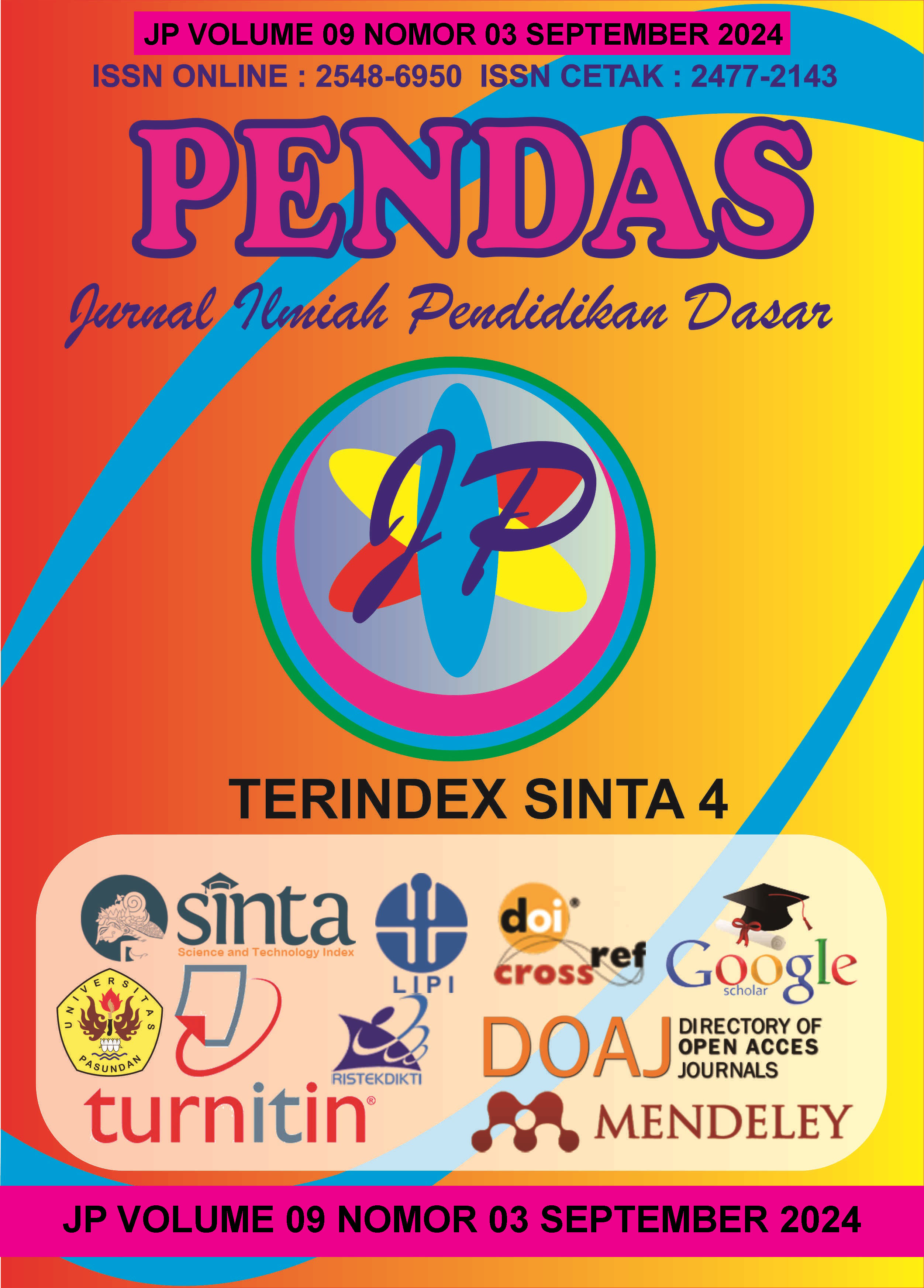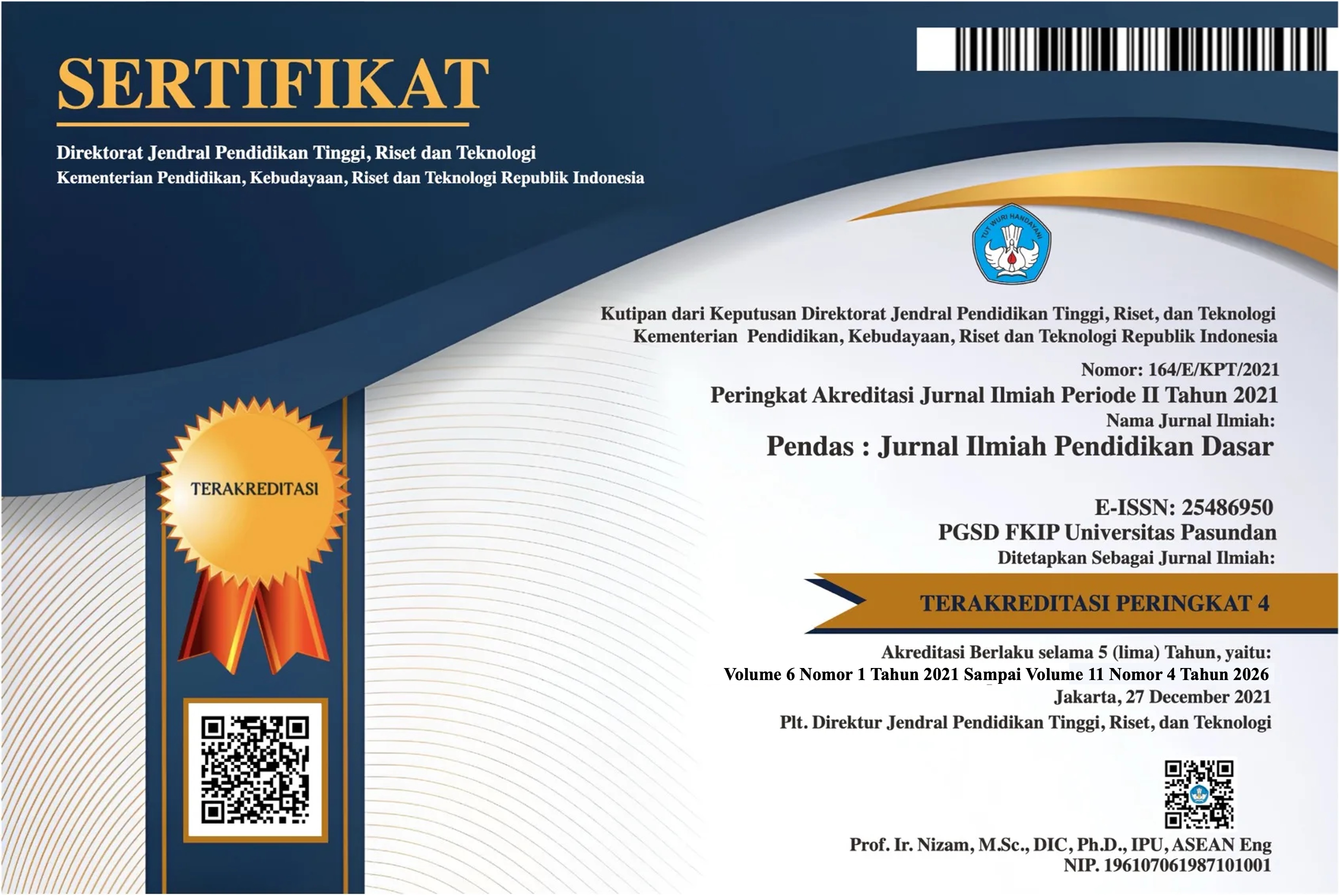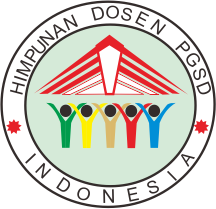PENGEMBANGAN MODUL AJAR TERPADU MODEL SEQUENCED UNTUK MENINGKATKAN KETERAMPILAN BERPIKIR KRITIS SISWA SEKOLAH DASAR
DOI:
https://doi.org/10.23969/jp.v9i03.15358Keywords:
critical thinking skills, elementary education, integrated learning modelAbstract
This study aims to develop an integrated teaching module with a sequenced model to improve critical thinking skills of fourth grade students at SDN Ngelom, Taman Subdistrict. This research was conducted in two stages, namely the preparation stage with the aim of developing teaching modules by following the design of the 4-D model from Thiagarajan (1974) which was modified into 3-D followed by the implementation stage of learning in the classroom using a one group pretest-posttest design. The research data obtained are as follows: the results of the validation of learning devices are categorized as good and can be used with revision. The difficulty level of BAS is very low and easy to understand. The readability level of BAS is very high and easy to understand. The learning implementation score is 3.44 which is categorized as good. The frequency of prominent student activities is listening or paying attention to the teacher's explanation by 27.46%. The percentage of students' response to the learning model is 93.8%. The student learning completeness score from the Learning Outcomes Test (THB) trial I pretest question was 67.4 (20%), on the posttest 89 (90%). Trial II pretest questions were 57.3 (17%), on the posttest 84.2 (92%). The obstacles in learning activities are the very few media owned by the school and at the beginning of the meeting there were some students who were still passive, but at the next meeting students already appeared active. Based on the results of data analysis, it can be concluded that the integrated module of the sequenced model to increase the students' learning ability. However, it still requires adaptation to suit the situation and conditions at school.
Downloads
References
Candra, Y. P. (2016). Pengaruh Lembar Kerja Peserta Didik (LKPD) Berbasis Model Pembelajaran Terpadu Tipe Sequenced Terhadap Kompetensi Siswa Pada Mata Pelajaran IPA Kelas VII di SMP N 3 Pariaman. PILLAR OF PHYSICS EDUCATION, Edisi: Vol. 8. Oktober 2016. Diakses 8 September 2018.
Depdikbud. 2003. Undang-undang No 20 tahun 2003 tentang sisdiknas. Jakarta: Depdikbud.
Dimyati dan Mudjiono. 2009. Belajar dan Pembelajaran. Jakarta: PT Rineka Cipta Islam, F. M., Nyoto, H., (2018). Penerapan Model Problem Based Learning Untuk Meningkatkan Berpikir Kritis Dan Hasil Belajar Ipa Dalam Tema 8 Kelas 4 Sd, 2(7), 613–628.
Kustijono, R. (2013). Dalam Mata Kuliah Multimedia Pada Mahasiswa Fisika Unesa, 2(1), 127–134.
Maryani, E. (2009). Pengembangan Program Pembelajaran Ips Keterampilan Sosial, 9(1), 1–111.
Saraswati, Y. (2007). Integrated Pada Subpokok Bahasan Mata Sebagai Alat Optik, (41).
Utami, R. (2004). Meningkatkan Aktivitas Belajar Siswa Dalam Ipa Terpadu Menggunakan Penilaian Portofolio Melalui Lesson Study Di Smp Sekolah Alam Dan Sains Aljannah Jakarta, (1995), 627– 637.
Zubaidah, S. (2017). Keterampilan Abad Ke-21: Keterampilan Yang Diajarkan Melalui Pembelajaran, (June).
Downloads
Published
Issue
Section
License
Copyright (c) 2024 Pendas : Jurnal Ilmiah Pendidikan Dasar

This work is licensed under a Creative Commons Attribution 4.0 International License.



















